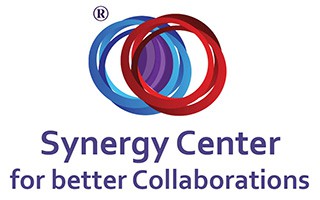As a proprietor, manager or consultant of your organization, to cultivate synergy, you must demonstrate a high degree of commitment, define your vision, purpose and boundary, reduce perceptions of “otherness” or inequality, and acknowledge the existence of diversity.
You are at the apex of your organization’s pyramid, and you have managerial authority – an administrator. You must have high levels of synergy with your co-founders, partners, directors or managers. If you do that, everything would fall in place, because your employees or workers look up to you.
This article provides you with tips on how to assimilate synergy successfully in your organization. Let’s take a look at some of them.
Adoption of Diversity and Equality at the Same Time
The feelings or perceptions of inequality and “otherness” tend to develop when organizational culture and structure are more hierarchic. While it’s out of the question to retain a flat management structure in large organizations, encouraging lateral relations – as opposed to linear relations – between members of different ranks or levels can reduce the feelings of “otherness” and inequality.
However, this doesn’t make your organization more uniform. Most of us have a habit of comparing ourselves to others; hence, relate diversity directly to hierarchy. In a nutshell, it’s natural for humans to evaluate themselves based on differences between them – whether someone’s better than them – through the hierarchical level. This could be precisely why synergy fails to take place successfully in most organizations.
This natural tendency can be seen when you bring out diversity issues, especially differences in managerial styles between males and females. The discussion turns out to be debatable, emotional, violent and defensive, especially if one gender perceives another as offensive and discriminatory.
Contrary to what you might think, there’s no direct relationship between gender difference and the willingness to institute “affirmative action” or correct male dominance in your organization. Diversity’s unavoidable, despite equality, and it’s a necessary precondition for synergy formation. When two diverse entities fuse, merge or integrate, something new arises – and that reality is a basis of synergy formation.
Large and complex organizations have structures, systems or procedures, which are hierarchic – and boundaries are rigid. However, some big organizations, in some instances, revert back to the flat management structure, which characterize small startups and family organizations. These instances can be seen when an organization forms a steering committee or task forces whose membership derives from across all organization’s elements.
Facilitation, Managerial Skills and Employee Development
For you to be skilful in using a language, you must learn it. That’s the case with synergy method. As a manager, owner or consultant, a skill in change management, especially during assimilation of technological, procedural or cultural changes, mergers and acquisitions, change in management, or customer service experience, is one of the most important managerial skills. It’s a skill that should feature strongly in your program of management trainees.
Synergy Method as a Basis of Remuneration
The remuneration system serves as a motivator of excellence, because bonuses demonstrate individual’s achievements. It’s important to note that if you reward employees according to their positions in the hierarchy, then it can be difficult to assimilate the language of synergy in your organization. Teamwork is a basis of synergistic work – not individual achievement. If you’re serious about motivating your employees, it’s important to use tools of bonuses, which cover a team or the whole organization.
A Case of Nursing a Scottish Community
Dr. Ben-Yshai narrates a case in which he worked jointly with nurses in a Scottish community. The nursing organization was undergoing change, and the nurses were willing to take part in that process. Together, the nurses created a collection of community resources e.g. specialist clinics, physicians lists, and referrals, according to community needs.
Everyone – nurses, stakeholders, community – demonstrated high levels of satisfaction and function during year one. However, that wasn’t the case during year two, because there was a noticeable loss of function. After a series of evaluations and deep soul-searching, it was found out that the main reason for the failure was that the activity was largely voluntary — it didn’t form a core part of nurse’s roles and responsibilities.
The nurses felt that the new activity was infringing on their core duties and responsibilities, and this feeling of invasion resulted in a spirited “defense of their boundaries”. This effort to make their boundaries more rigid was because of lack of remuneration for this activity. Hence, the nurses became frustrated, lost motivation and reduced their output. In retrospect, some nurses perceived the absence of their colleagues during the weekend as lack of commitment to the activity.
This case’s a demonstration of how the roles, responsibilities or associations of others depend on interactions outside the immediate career and employment of the involved party. This problem informed the redefinition of the reward system, and the formal work hours included nurse’s meetings. This solution had an effect on the satisfaction and output of the nurses.
Synergy’s not Chemistry…
But requires commitment, clear definition of roles, responsibilities or associations, simultaneous adoption of diversity and equality, remuneration system, managerial skills, facilitation and employee development. Synergy doesn’t require individual achievements, neither does it require comparisons based on hierarchy or social position.





mobile online slot machines
1 Oct 2018Hi my family member! I wish to say that this post is
awesome, great written and come with approximately all
vital infos. I’d like to peer more posts like
this . https://www.jeff-foster.com/__media__/js/netsoltrademark.php?d=918.network%2Fcasino-games%2F75-ace333
lpe88 download android
3 Oct 2018We are a group of volunteers and starting a new scheme in our community.
Your website provided us with valuable information to work on. You have done an impressive job and our whole community will be grateful to you. https://918.network/casino-games/67-lpe88-lucky-palace-casino
rami
7 Oct 2018Glad I could be of help. If you have any questions – please do not hesitate to contact me for more help.
rami
7 Oct 2018Thanks for the worm words. All the posts are on my website, and much more.
dan z vyhry online casino
15 Oct 2018Just want to say your article is as amazing. The clearness in your post is simply cool and
i could assume you are an expert on this subject. Fine with your permission let
me to grab your feed to keep updated with forthcoming post.
Thanks a million and please carry on the gratifying work.
playboy888
6 Nov 2018What’s up, this weekend is pleasant designed for me,
as this occasion i am reading this enormous educational post here at
my home. https://918.network/downloads/86-play8oy
newtown ntc33
19 Dec 2018Wow, wonderful blog format! How lengthy have you
been blogging for? you make blogging look easy. The total glance of your site is fantastic,
let alone the content material! https://918.network/downloads/82-ntc33
ergfirnolikz
9 Jan 2019Its like you read my mind! You appear to know so much about this, like you wrote the book in it or something. I think that you could do with a few pics to drive the message home a little bit, but other than that, this is wonderful blog. An excellent read. I will certainly be back.